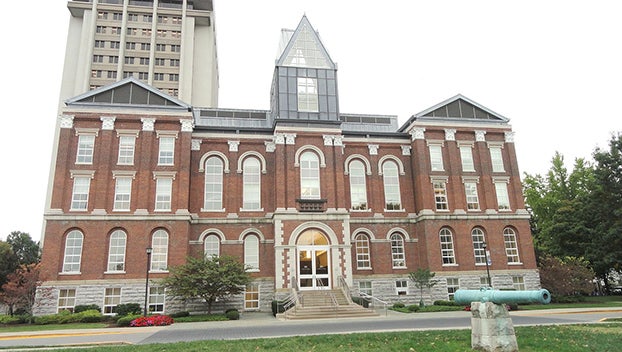Kentucky group part of landmark physics experiment few people — even physicists — fully understand
Published 6:45 am Saturday, April 24, 2021
On a February Zoom call, a team of University of Kentucky professors held their breath alongside hundreds of their colleagues across the country, waiting to find out the results of three years of work.
When the moment of truth came there was first silence “then it just erupted,” said Renee Fatemi, a UK professor of physics. It was of course only as loud as you can get on Zoom, but it did little to dampen the significance.
“Everybody’s on mute, of course, on Zoom, but I think everybody in their own homes was shouting, and it was just amazing,” said Tim Gorringe, also a UK physics professor.
Those on that Zoom were all a part of a large-scale physics experiment at the Fermi National Accelerator Lab in Batavia, Ill. The experiment is designed to reproduce another study from 2001 in a more accurate and more modern manner. The results of the original experiment at Brookhaven National Laboratory pushed the limits of physics’ best-known theories about the building blocks of the universe. The early returns of the recent Fermilab experiment are consistent with Brookhaven’s findings, grabbing national headlines in the process.
“For two decades, people have been wondering was the Brookhaven measurement, right? Was it a fluke?,” Fatemi said.
The results of both experiments point to a potential gap in the Standard Model of physics — essentially a compilation of the best theory explaining the nuances of the particles and forces of the universe. According to CERN, the European Organization for Nuclear Research, the model “has successfully explained almost all experimental results and precisely predicted a wide variety of phenomena.”
The findings at Fermilab and Brookhaven suggest that the model is incomplete and that there’s still much to be learned in the subatomic world. Brad Plaster, also a physics professor at UK, said the experiments “could point to a gap in our knowledge.”
“There’s a disagreement between what the experiment measured, and what the best theories today have so far calculated,” Plaster said. “And so one may think that that is some evidence that there are some particles or forces that are not accounted for in the best theory to date.”
Traditionally, empty space “or vacuum” was thought of as being completely empty, but Gorringe said modern physicists know that space is filled with particles “appearing and disappearing.” Within the vacuum are particles that “we know about” — take electrons for example — along with particles and forces “we don’t know about.”
The findings at Fermilab suggests “that in the vacuum, there’s something beyond the particles and forces that you have in your current theory or your current model,” Gorringe said. “So that’s kind of what we’re trying to probe — Is that content of the vacuum.”
At the heart of both experiments are subatomic particles called muons. Muons are like electrons, they have spin and a charge, but are much heavier than electrons, Gorringe explained. They’ve been known to scientists for decades.
“In fact, there’s muons that are raining down on us, you and I,” said Plaster, explaining that the particles occur naturally when cosmic rays strike Earth’s atmosphere.
Fermilab’s particle accelerators can create muons in large quantities. To perform the experiment a beam of muons is injected into the blue, 50-foot diameter ring which they circulate around thousands of times while researchers measure their “magnetic moment” or magnetic strength as they interact with a magnetic field within the ring.
“That’s really the key part of the experiment is sort of storing (the muons), trapping them, holding them while we observe them,” Gorringe said.
The Standard Model has a specific measurement for what the muons’ magnetism should be, but the measurements taken at Brookhaven and now Fermilab disagree with the Standard Model, suggesting that something — particles or forces still unknown — are perhaps acting on the muon.
That’s what the researchers learned on that February Zoom call, an “unblinding” where the final number needed to unlock the results. In plans to get even more accurate data than the Brookhaven experiment, Gorringe said the experiment is still running and will extend years into the future.
“I’ve been part of other unblindings and other experiments, but none has carried to me this significance and this weight,” Plaster said.
The UK professors filled a multitude of roles in the experiment, alongside what they say is a remarkably diverse group of dedicated and hard-working students.
Fatemi is the experiment’s simulations manager and was one of the people involved in developing and running the simulations the experiment utilized to help explain what’s seen in the data. Plaster and his students worked on a “toolkit of simulations” that allowed them to follow the muons around the ring, while Gorringe and his group helped to create the system that read and processed the “huge amount of data” created by the experiment.
Like many fields, physics tends to have little representation of minority groups, Fatemi said. UK’s group has a very diverse makeup of different nationalities and genders which Fatemi said they’re proud of.
“We have someone from China, we have some from India, we have someone from Spain, we have someone from Kentucky, and all these people work together,” Fatemi said.






